BY ANGELA M. WISEMAN On April 21 I wrote a post on the same topic, in which I addressed some of the anxiety, stress, and trauma that children might be facing during COVID-19. In this follow-up post, I am sharing some books that my colleagues and I have found helpful in talking with adults and children about trauma, in hopes that these books can start facilitating conversations about feelings, fears, hopes, and dreams. 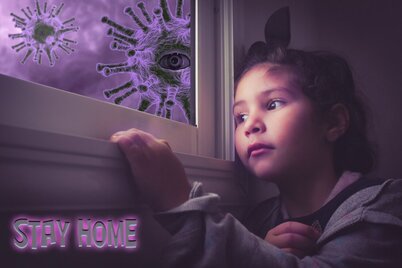 COVID-19 has created stressful situations for many families - we may be concerned about many issues, including financial issues/job security, trying to meet professional obligations, and staying healthy. Children are experiencing general anxiety and stress, but also often experience negative feelings resulting from missing friends and family, adapting to changes in routines and activities, and fear of getting sick. In this post, I am going to suggest some ways to use children’s literature to start conversations about anxieties, sadness, and coping mechanisms. In addition, I share some resources for adults and children that might be helpful. Books for talking about anxieties and fear
Reading and responding to literature can be emotional, empowering, and transformative. When children experience trauma or anxiety, picturebooks can be a powerful way to foster conversations about their experiences and beliefs. Or, simply, they can offer an opportunity for adults and children to talk about feelings and emotions. The complexity of picturebooks - the visual and textual components - allows for multiple ways to respond and consider topics. Children’s literature can expand readers’ experiences; encouraging readers to relate to others and consider different perspectives. In addition to text, images serve as a central component of picturebooks that allow readers to articulate insightful interpretations that can lead to further discussion.
Here are two books that could cultivate conversations about anxiety and stress. I have used both of these texts with my colleagues in a trauma-informed family literacy program for parents who are in rehabilitation for substance use disorder to foster communication and build relationships. After describing the two books that could facilitate discussions, I provide some suggested ebooks about the CoronaVirus. Finally, I provide a few resources that could be helpful for families.
Thank you to Lauren Liang for suggesting the ebooks. I would like to acknowledge Qiana Cryer-Coupet’s and Ashley Atkinson’s collaboration on the family literacy program and Qiana’s contribution of additional helpful resources. Image by enriquelopezgarre. Pixabay License.
BY KATHY G. SHORT Many authors, illustrators, publishers, and literacy organizations offer valuable resources during this time of mandated on-line learning. An ongoing issue, however, is that only a few of these resources highlight global literature, books set in global cultures outside of the U.S. At Worlds of Words, a Center of Global Literacies and Literatures, our goal is to support educators and families in engaging readers with global literature to encourage intercultural understanding across cultures. If you are a teacher educator searching for on-line readings and book lists for your courses or a teacher creating new inquiry units that are global in focus, the following resources can support your work. You can also use these features as examples for students to create their own reviews, vignettes, or book recommendations:
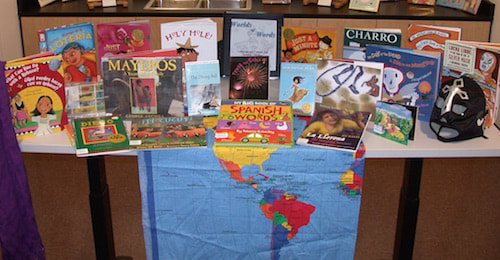 Spanish/Mexican Language and Culture Book Kit Spanish/Mexican Language and Culture Book Kit
In this time of global crisis, the need to broaden our world views and develop empathy and knowledge about cultures beyond our own is increasingly critical. Reading globally invites readers to enter story worlds to experience how people live, feel, and think around the world, providing the potential to transform their world views through understanding their current lives and imagining beyond themselves. Open a Book…Open a Mind…Change the World Kathy G. Short, University of Arizona Worlds of Words images used with permission. BY MARY LEE HAHN AND FRANKI SIBBERSON
BOOK CHOICEMary Lee: We were about two-thirds of the way through The Last Human by Lee Bacon when we got the news that our schools would be closed. The book is a very middle-grade appropriate dystopian future novel. I chose it to follow We’re Not From Here by Geoff Rodkey, another middle grade dystopian future story, and Indian No More by Charlene Willing Mcmanis and Traci Sorell, which is historical fiction that might be categorized as a story about our “dystopian past.” As you can see, our read aloud journey this year has been filled with important, but difficult conversations about who we are as humans and as Americans. The premise of The Last Human is that the robots have killed off the human race because it was wrecking the planet. Spoiler alert in the title and the image on the cover of the book -- they didn’t get us all. In our very last read aloud together, one of my students wondered aloud if robots caused the coronavirus and were trying to kill us all off. I assured them that the coronavirus comes from nature, and humans will use all of the science and technology possible to understand the virus and stop its spread. It was at that moment that I knew I must finish The Last Human. We couldn’t leave the story before we got to the part where the robots and humans collaborate to create a sustainable future for the human race and for the planet. We had to get to the hope, to the positives. For our next read aloud, I gave my students the choice of four books I’ve loved. Not ones to shy away from heavy topics, they chose The Honest Truth by Dan Gemeinhart. Franki: We were in the middle of a great book, New Kid by Jerry Craft. We were using the incredible audio along with the Kindle version so kids could see the images as they heard the story. With all those parts, it seems better to start a new book instead of trying to make this work online as our first online read aloud. When I think about the kind of book I’d like to read aloud during this time, I know I want a plot-based book - a book that kids will want to hear each day. I want a book they can get lost in and one that has enough to talk about without being too heavy. I’ve decided on The Unicorn Quest by Kamilla Benko and I am excited to begin sharing it with students. KEEPING THE CONVERSATIONS GOINGFranki: Read aloud has always been an important part of our day and it will hopefully continue to be that. The combination of a great story and our collective thinking is important and I’ve been wondering how to make that work without being together in our classroom meeting area. I’ve decided to use Google Meet so that any students who are available can meet “live”. (For others, I’ll record the session.) This will allow us to read and talk and get back to our typical read aloud routine. I’ve also set up a Flipgrid and a Padlet so that we can build on the conversation across each day. Mary Lee: I finished The Last Human by recording (on a private YouTube channel) a few chapters a day, and reading aloud live once a week in a Google Meet. Reading aloud with students “in front of me” was what began to heal my teacher soul. So with our new book, I’m reading aloud live every day on Google Meet. Students bring their reader’s notebooks and track their thinking as they listen. Before they unmute and we begin our discussion, we share our thinking in the comments. They love the comment tool, and this has given them an authentic way to use it. While our read alouds look and sound a bit different than they did in our physical classrooms, like so much of what we are doing with online learning, we have found that the closer we hold on to our core values as teachers, the more authentic our digital learning space feels.
Image by geralt. Pixabay License.
BY ANGELA M. WISEMAN
COVID-19 has created stressful situations for many adults - we may be concerned about many issues, including financial issues/job security, trying to meet professional obligations, and staying healthy. This is often magnified and multiplied with the children in our lives. Many of us are mentoring, supervising, teaching, caring, parenting and communicating with children in new ways due to the quarantine. These children, too, are reacting to this new situation and changes, many with big feelings of sadness and anxiety. The helpful graphic below* provides important insight about what we may see with children. When we understand that children’s behaviors may look different, we can use this information to support them.
In this blogpost, I want to start by addressing some of the anxiety, stress, and trauma that children might be facing during COVID-19. In a second blogpost on Thursday, April 30th, I will share some books that my colleagues and I have found helpful in talking with adults and children about trauma in hopes that these books can start facilitating conversations about feelings, fears, hopes, and dreams.
To understand issues facing children, I have thought about my own experience as a parent and also informally polled people using social media to learn more about what children were experiencing through the eyes of adults, guardians, family and friends. While this does not represent a systematic investigation and relies heavily on personal experiences (I am the mother of three boys, involved in family support groups and have a large extended family), I thought it would be helpful to understand the main concerns of children as perceived by the adults in their lives.
Missing friends - A prevalent concern is that children miss their friends. Adults have shared that many children missed being together with their friends and found it unfulfilling to engage in zoom, FaceTime, or other virtual methods of connecting. While it seems that older children spend a lot of time connecting through electronic means such as multiplayer videogames, texts and conferencing (and I can confirm this as a parent of teenagers!), younger children find it frustrating and wish they could see the person face to face. In addition, even though older children might be used to using technology to keep in touch, many high school children are incredibly disappointed to miss out on milestone events, such as prom, music concerts, sports events, or graduation.
Missing family - In addition to missing friends, many children miss their family. Families may find themselves separated from each other for many reasons, particularly if one family member is an essential worker. One mother shared that “my eight year old is staying with his bio dad/my ex-husband during the quarantine because my husband (his stepdad) is a nurse. He has been missing us terribly and we miss him so much, too!” One caring adult shared that she put together a care package for a child in their life with individual notes for them to open each day. They stated that “I hope this will let him know I’m thinking about him all the time!” Missing Routines and Activities - Children miss their regular routines and activities that they do outside of school that have been shut down indefinitely, which could include sports and other activities they do with friends and on teams. One parent told me that, “My oldest son is a competitive rock climber, and he hasn’t been in the gym in over a month and really misses that physical outlet of climbing. He’s quite literally climbing the walls in this house.”
Many adults shared how difficult it is to transition to online schooling - both for children and themselves. There are countless memes that reflect these feelings, for example:
Many adults are sharing how challenging it is to help with school requirements, particularly if they have additional work responsibilities, technology challenges, or difficulties engaging with schools. As with their children, they may not be aware of how the change of routines and activities affect their lives or even have the bandwidth to support in ways they would like. As a result, caregivers, teachers, tutors, and parents feel additional stress because they are currently caring for or supporting children in various ways they had not anticipated prior to the pandemic.
Fear of Illness - A very significant fear and anxiety is getting ill. They might be scared that they will get sick, but they also worry about loved ones. I have friends and family who have been affected by COVID-19, experiencing the illness. While no one I know has died from COVID-19, I have family who has suffered from it and friends who have experienced loss. Many children worry about their own family members who are older, immune-suppressed or compromised, who are at higher risk for contracting the virus.
General feelings of anxiety - Finally, many children are sharing general feelings of anxiety that are not necessarily articulated to specific concerns. While it may be hard to pinpoint what the concerns are, these behaviors might show as sleeplessness, acting out, or tiredness. Children might not come out and say, "I'm worried about this!"
For the next blog post which will come out on Thursday April 30, I will share children’s picturebooks and resources that might help support children who are affected by trauma, anxiety and stress from the pandemic. Stay tuned!
April 30, 2020 Update: Part II of post BY ALLY HAUPTMAN
The Steps
1. Choose a text. It might be a brilliantly written and illustrated picture book, an excerpt from a middle grades or YA novel, or even an interesting infographic. 2. Share the text with your students and model what writing ideas you have based on this text. 3. After reading, ask the questions, “What writing ideas do you get from this text? What are the possibilities you see as a writer?” 4. Get out of the way and let kids write and create! 5. Give students time to share and learn from each other. That’s it...five steps that lead to important discussion and writing possibilities. The following is an example of this writing lesson in action with two of my own children. I started by reading Malala’s Magic Pencil by Malala Yousafzai. The book begins with Malala talking about a television program she used to watch. The show’s main character was a boy with a magic pencil who Malala saw as a hero, always helping others. She dreamed of having her own magic pencil. She goes on to tell her story of fighting for girls’ education, realizing that she really did have a magic pencil all along. She was able to change the world with her pencil as she fought for educational equality. The last line in the book reads, “One pen, one teacher, one student can change the world.” Here is the key to this lesson, and this is how I get out of the way of their creativity. I asked my children to write for ten minutes about what ideas they got from Malala’s Magic Pencil. It is as simple as that. I did not give them my prompt that might be presented from this book such as, “What would you do with a magic pencil?” I let them figure out how this book would be a mentor text for their own writing. The beauty of presenting a text and then letting students figure out their own writing possibilities is that they bring their background knowledge, voice, and writing style and combine it with the author’s ideas from the text presented. When you present a mentor text and ask the students to see the writing possibilities, the variety is astounding. Just with my own daughters, my fifth grader, who is the youngest and always trying to prove herself to her sisters, wrote about a magic tree. In her story, no one believes her that this tree is magic and she hatches a plan to show everyone that she is right. She brought in her ideas and showed strong voice. My eighth grade daughter decided to write about the Infiniti Pen. It is worth mentioning that all of my daughters are obsessed with Marvel movies. So, the Infiniti Pen was inspired by Thor’s hammer in that only the worthiest person in the village could pick up the pen because of its persuasive powers. In this piece, my daughter chose to bring in her own voice and combine Marvel with Malala’s ideas. These writers were able to choose their ideas and use their voices. When we present possibilities through mentor texts, readers also begin to read like writers. Try it. Read a book and ask your students to find writing possibilities, to write for ten minutes and see where it may lead! The following list includes texts I have used to spark writing ideas over the past few years with teacher candidates, K-12 students, and my own children. 25 books with endless possibilities…
After the Fall by Dan Santat Animals by the Numbers by Steve Jenkins Bookjoy, Wordjoy by Pat Mora, illustrated by Raúl Colón Camela Full of Wishes by Matt de la Pena, illustrated by Christian Robinson Claymates by Dev Petty, illustrated by Lauren Eldridge Coco: Miguel and the Grand Harmony by Matt de la Pena, illustrated by Ana Ramírez Cute as an Axolotl by Jess Keating, illustrated by David DeGrand Drawn Together by Minh Lê, illustrated by Dan Santat Dude! by Aaron Reynolds, illustrated by Dan Santat Dreamers/Sonadores by Yuyi Morales Friends and Foes: Poems About Us All by Douglas Florian Imagine by Juan Felipe Herrera, illustrated by Lauren Castillo Jabari Jumps by Gaia Cornwall Love by Matt de la Pena, illustrated by Loren Long Malala’s Magic Pencil by Malala Yousafzai, illustrated by Kerascoёt Maybe Something Beautiful: How Art Transformed a Neighborhood by F. Isabel Campoy and Theresa Howell, illustrated by Rafael López Nope! by Drew Sheneman The Day You Begin by Jacqueline Woodson, illustrated by Rafael López The Girl With a Mind for Math: The Story of Raye Montague by Julia Finley Mosca, illustrated by Daniel Rieley The Wolf, the Duck, and the Mouse by Mac Barnett, illustrated by Jon Klassen The Word Collector by Peter H. Reynolds They All Saw a Cat by Brendan Wenzel Water Land by Christy Hale What Makes a Monster? by Jess Keating, illustrated by David DeGrand Wild World by Angela McAllister, illustrated by Hvass & Hannibal Ally Hauptman is a CLA Board Member and is the Chair of the Ways and Means Committee. She is an associate professor at Lipscomb University in Nashville, TN. Image by Tookapic from Pixabay
Audiobooks, Assistive Software, and Adaptations: Inclusive and Accessible Online Literacy Resources4/14/2020
BY ALEXANDRA LAMPP BERGLUND
Tales2Go is an online audiobook service for readers of all ages, which provides instant and unlimited access to over 10,000 book titles. These audiobooks can be accessed on a desktop computer, laptop, and mobile device. While facilitating online learning, educators can use these audiobooks to engage in lessons that work to build comprehension, fluency, and phonemic awareness, explore new vocabulary and more, depending on grade level. For instance, in an early childhood setting, after selecting a text, students can listen to the audiobook at their own pace. When finished, students can be asked to recount the story, in their own words, through whatever means of communication your digital classroom uses (Google Classroom, email, FlipGrid, Seesaw, etc.). After subsequent listens and additional prompts, students can also create story maps, complete graphic organizers, or devise their own version of the story that follows the same narrative structure.
While creating lessons like these using Tales2Go can be fun and impactful for your digital classroom, using only one app or service isn’t feasible. Print texts will need to be implemented in numerous and similarly beneficial ways. When doing so, it is crucial to use or share other modifications for this type of media. Text to speech software can convert many text files and webpages directly into audio and is readily available on different devices, under Settings or within the Control Panel. This includes Apple products (MacBooks, iPads, and iPhones), technology that uses Windows software, Android devices, and Chromebooks. Additionally, dictation or speech recognition software, found within word processing programs and on mobile devices, can assist students in expressing themselves through speech, without writing by hand or with a keyboard or worrying about spelling or grammar. Providing audio material by using apps like Tales2Go and other resources such as text to speech software or sharing how to create audio materials with students are just a few small steps in making online literacy learning accessible to students with (dis)abilities, but they are important ones. Accessibility is essential, as we continue to navigate this digital landscape together, as educators, students, and family and community members. Together, we can all make small adaptations that make big differences in our online classrooms which we continually strive to make inclusive for all learners. Alexandra Lampp Berglund is the Chair of the CLA student committee. She is a doctoral student in Language and Literacy Education at The University of Georgia. Photo by StockSnap
BY JANET K. OUTLAWExperiencing online education is a completely different experience from in-person teaching and learning. Simply transferring what you would normally do to an online platform doesn’t offer the same kind of experience. During this time of social distancing, I’ve been particularly interested in thinking about platforms that still allow teachers and students to engage in literacy in socially participative ways. FlipgridOne platform that is really interesting for students to share out responses to children’s literature is Flipgrid. It is a great way for all children, or college students, to share their experiences, their learning, and reflections! As the teacher, you can add members of your class to Flipgrid and ask them to share out about what they’re reading at home. Since children have varying accesses to high-speed internet or media devices, I also like Flipgrid because it can be used on a tablet or mobile phone. It’s free to create an account and join. It offers wonderful learning opportunities, where each student can highlight an amazing new book they read, what they may have personally connected to in the story, or how they felt while reading it.
I’m not a technologically savvy person at all, but Flipgrid is very user-friendly. I first used it a couple of years ago in an online graduate course. It helped the course to feel more socially engaged than typical online courses. Watching classmates’ videos and hearing about their experiences brought the class to life in a way online discussion boards just don’t. If it’s your first time using Flipgrid, below is a brief tutorial video to show you how to set it up as an instructor.
Once you have gotten your account and topic set up, you can share it with your students for a variety of different discussions. One great idea would be for every student to give a book talk of a new children’s book they read at home! As mentioned in an earlier blog post, there are several resources for free access to children’s books right now:
Some of my favorite texts that are available on Epic are A Different Pond (by Bao Phi, Illustrated by Thi Bui) and We Are Grateful: Otsaliheliga (by Traci Sorell, Illustrated by Frané Lessac). A Different Pond touches on themes of immigration, loss from war, and family pride. We Are Grateful: Otsaliheliga prompts you to think again about all of the people and things in your life you are grateful for. These are just a couple of books you can recommend to your students or allow them the choice to read a book of interest to them! Using Flipgrid, you can have discussion question prompts to guide students through their book talk, such as:
Janet K. Outlaw is a member of the CLA student committee. She is a doctoral candidate in Literacy and English Language Arts at North Carolina State University. Further Resources
LORA M. DEWALT
Instagram Inquiry ProjectChildren’s literature courses are material heavy and right now we are not able to guarantee our students have access to the books we would otherwise read and explore. However, through Instagram, students can have access directly to the book creators themselves. One assignment could be an Instagram Inquiry. I envision that undergraduate or graduate students might inquire into their personal interests with a particular author or illustrator on Instagram. Possible topics might include “What can we learn about an illustrator’s process from watching their Instagram stories and posts?” or “What do I notice about the way an author crafts their captions, how does that reflect (or differ) from their writing in books?” Perhaps a student might ask “What did a particular author share prior to March 2020—what do they seem to be sharing now?”' This inquiry assignment might be offered as a follow up to an author study, which Erika Thulin Dawes wrote about on the 3/24/2020 CLA Blog.
|
|
@aishacs (Aisha Saeed)
@andominguezzzz (Angela Dominguez) @authorderrickdbarnes (Derrick Barnes) @colleenaf (Coleen AF Venable) @cordell_matthew (Matthew Cordell) @erikalsanchez (Erika L. Sanchez) @erinentrada (Erin Entrada Kelly) @jessicalovedraws (Jessica Love) |
@macbarnett (Mac Barnett)
@marlafrazee (Marla Frazee) @nicolayoon (Nicola Yoon) @oge_mora (Oge Mora) @rainbowrowell (Rainbow Rowell) @Sean_qualls (Sean G. Qualls) @theartoffun (Christian Robinson) |
Lo DeWalt is a CLA member. She is a doctoral candidate at the University of Texas at Austin. Lo co-teaches an undergraduate children’s literature course and works as a district administrator in Manor, Texas.
BY PATTY ROSATI
| Many publishers have compiled their best online resources in central locations to help you find what you’re looking for and to spark your imagination. Here are some details about what HarperCollins and other publishers are doing to support you through these uncertain times. HarperCollins has collected free, sharable resources for all reading levels on Harper at Home. This is also where you can find our updated permissions policy for online story time, live events and classroom read-aloud videos. Many other publishers have expanded their permissions policies to help meet current needs, so be sure to check their websites and social platforms for more information. |
| | Content created specifically for teachers and librarians lives at HarperStacks at Home. Every Monday afternoon, HarperStacks posts videos, blogs, and other resources for teachers, librarians, and parents to keep kids learning while keeping it fun! Our first video was with Newbery-Medal winning author Erin Entrada Kelly who talked about Creative Bravery. We have videos scheduled with Elizabeth Acevedo, Rita Williams Garcia, Naomi Shihab Nye, and Kelly Yang coming this month and next. You can get all of this content on Facebook and Twitter. |
Little, Brown Books for Young Readers has picture book activities for kids, videos, and educator guides for many of their titles, including the book that many librarians and educators are currently buzzing about, Stamped.
Random House Children’s Books features activities and guides for a number of their titles used in schools, including Wonder and the Magic Tree House books.
There are so many other good, free materials available from a variety of big and smaller publishers. Our friends at The Children’s Book Council have been compiling a list of publisher content that supports educators. Please check them out to find out what other publishers are offering.
Please feel free to be in touch to let us know if there is anything else that we publishers can do for you. We are here to help!
Patty Rosati
Publisher Liaison
Authors:
CLA Members
Supporting PreK-12 and university teachers as they share children’s literature with their students in all classroom contexts.
The opinions and ideas posted in the individual entries are those of the individual authors and do not necessarily reflect the opinions or views of CLA or the Blog Editors.
Blog Editors
contribute to the blog
If you are a current CLA member and you would like to contribute a post to the CLA Blog, please read the Instructions to Authors and email co-editor Liz Thackeray Nelson with your idea.
Archives
May 2024
April 2024
March 2024
February 2024
January 2024
December 2023
November 2023
October 2023
September 2023
August 2023
May 2023
April 2023
March 2023
December 2022
November 2022
October 2022
September 2022
August 2022
June 2022
May 2022
April 2022
March 2022
February 2022
January 2022
December 2021
November 2021
October 2021
September 2021
August 2021
June 2021
May 2021
April 2021
March 2021
February 2021
January 2021
December 2020
November 2020
October 2020
September 2020
August 2020
June 2020
May 2020
April 2020
March 2020
Categories
All
Activism
Advocacy
African American Literature
Agency
All Grades
American Indian
Antiracism
Art
Asian American
Authors
Award Books
Awards
Back To School
Barbara Kiefer
Biography
Black Culture
Black Freedom Movement
Bonnie Campbell Hill Award
Book Bans
Book Challenges
Book Discussion Guides
Censorship
Chapter Books
Children's Literature
Civil Rights Movement
CLA Auction
CLA Breakfast
CLA Expert Class
Classroom Ideas
Collaboration
Comprehension Strategies
Contemporary Realistic Fiction
COVID
Creativity
Creativity Sponsors
Critical Literacy
Crossover Literature
Cultural Relevance
Culture
Current Events
Digital Literacy
Disciplinary Literacy
Distance Learning
Diverse Books
Diversity
Early Chapter Books
Emergent Bilinguals
Endowment
Family Literacy
First Week Books
First Week Of School
Garden
Global Children’s And Adolescent Literature
Global Children’s And Adolescent Literature
Global Literature
Graduate
Graduate School
Graphic Novel
High School
Historical Fiction
Holocaust
Identity
Illustrators
Indigenous
Indigenous Stories
Innovators
Intercultural Understanding
Intermediate Grades
International Children's Literature
Journal Of Children's Literature
Language Arts
Language Learners
LCBTQ+ Books
Librarians
Literacy Leadership
#MeToo Movement
Middle Grade Literature
Middle Grades
Middle School
Mindfulness
Multiliteracies
Museum
Native Americans
Nature
NCBLA List
NCTE
NCTE 2023
Neurodiversity
Nonfiction Books
Notables
Nurturing Lifelong Readers
Outside
#OwnVoices
Picturebooks
Picture Books
Poetic Picturebooks
Poetry
Preschool
Primary Grades
Primary Sources
Professional Resources
Reading Engagement
Research
Science
Science Fiction
Self-selected Texts
Small Publishers And Imprints
Social Justice
Social Media
Social Studies
Sports Books
STEAM
STEM
Storytelling
Summer Camps
Summer Programs
Teacher
Teaching Reading
Teaching Resources
Teaching Writing
Text Sets
The Arts
Tradition
Translanguaging
Trauma
Tribute
Ukraine
Undergraduate
Using Technology
Verse Novels
Virtual Library
Vivian Yenika-Agbaw Student Conference Grant
Vocabulary
War
#WeNeedDiverseBooks
YA Lit
Young Adult Literature


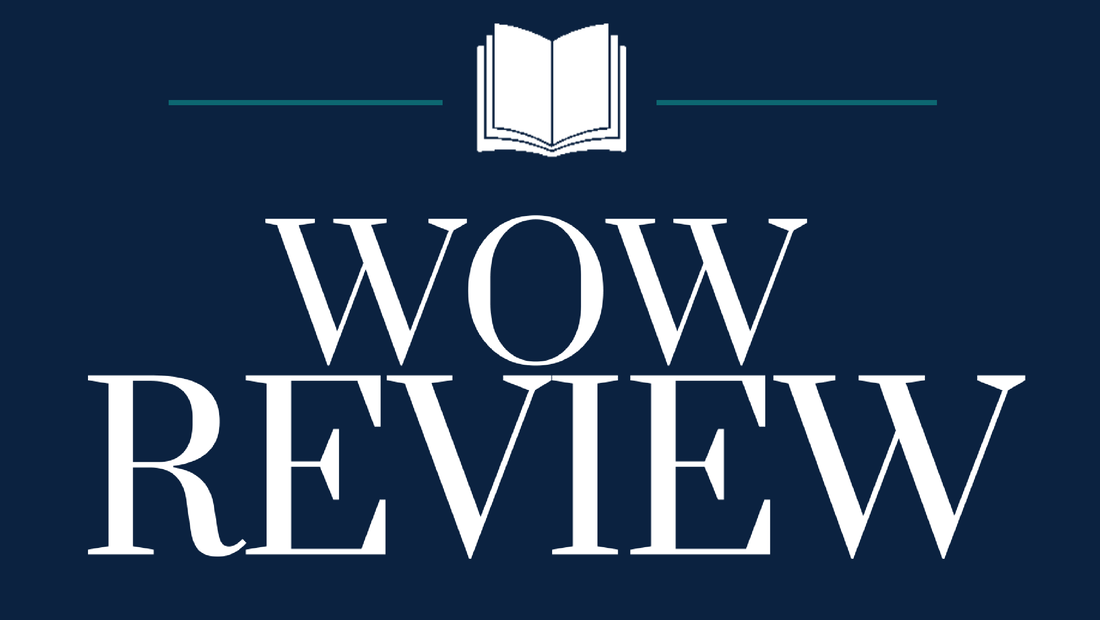
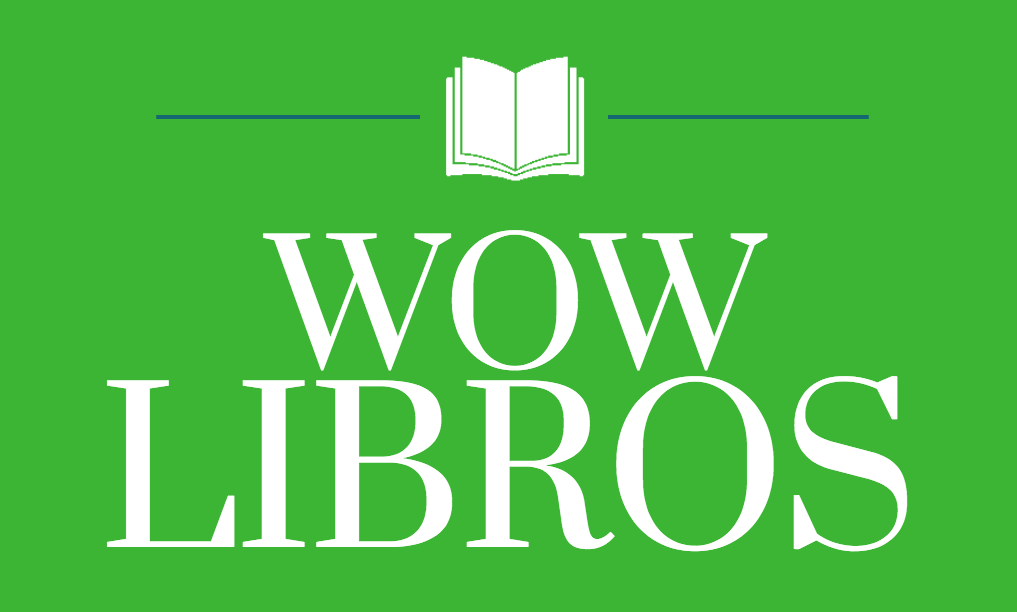


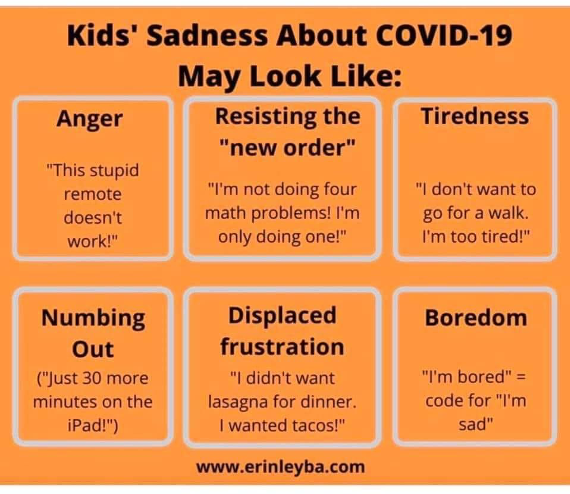
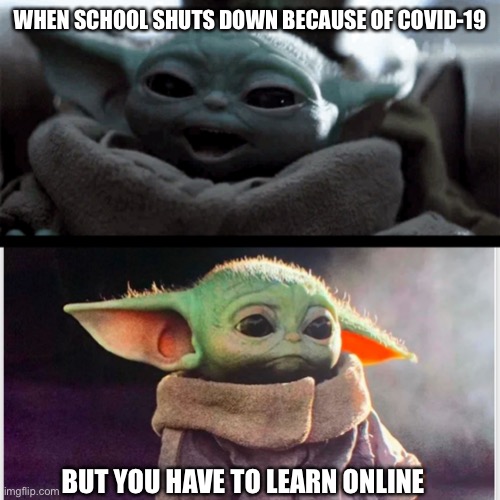



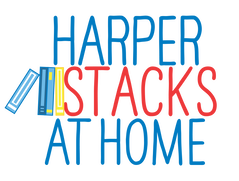
 RSS Feed
RSS Feed